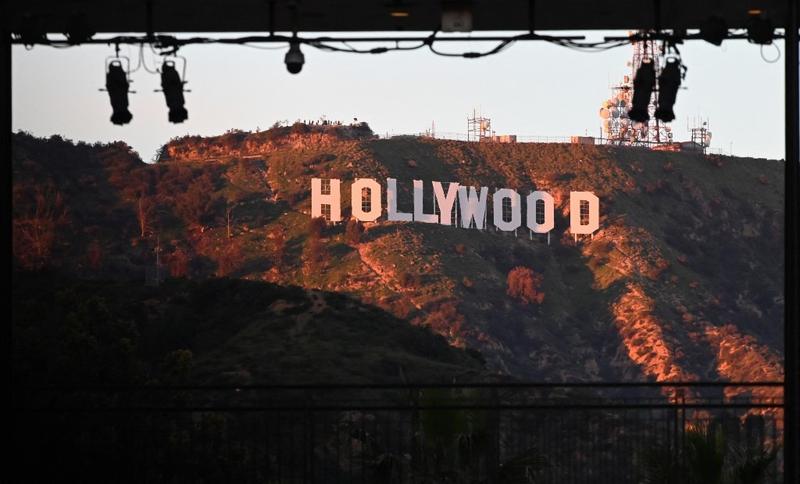 This photo shows the Hollywood sign from Hollywood Boulevard, on the site of the upcoming Academy Award ceremony on Feb 21, 2019 in Hollywood. (ROBYN BECK / AFP)
This photo shows the Hollywood sign from Hollywood Boulevard, on the site of the upcoming Academy Award ceremony on Feb 21, 2019 in Hollywood. (ROBYN BECK / AFP)
A study of 1,300 of the top-grossing movies released by Hollywood over 13 years shows just 3.4 percent of them, or 44, had leads or co-leads who were Asians or Pacific Islanders, and two-thirds of characters in the films reflect stereotypes.
In 14 of the movies, Dwayne "The Rock" Johnson, whose mother is of Samoan descent, was the lead, according to the study, which tracked films from 2007 to 2019. It was a collaboration of Nancy Wang Yuen, a sociologist at Biola University in La Mirada, California, the USC Annenberg Inclusion Initiative, and Stacy L.Smith, the initiative's founder.
"Mainstream Hollywood isn't doing its job," Yuen told NBC. "I'm just so grateful that there's more independent movies, and I think the awards circuits are recognizing these more authentic stories. So hopefully, that will then trickle over to mainstream Hollywood, but we haven't seen that in terms of the kind of history up to this point."
She said that because there aren't enough roles for (Pacific Islanders) and Asian actors in general "that's why we see The Rock so many times".
Mainstream Hollywood isn't doing its job ... I'm just so grateful that there's more independent movies, and I think the awards circuits are recognizing these more authentic stories. So hopefully, that will then trickle over to mainstream Hollywood, but we haven't seen that in terms of the kind of history up to this point.
Nancy Wang Yuen, sociologist at Biola University in La Mirada, California, the USC Annenberg Inclusion Initiative
ALSO READ: Hollywood embracing diversity could boost revenue by US$10b
"We don't see anyone else, because it's coming from behind the scenes. It's the storytellers, the people who are greenlighting the projects. The Rock succeeding could actually help bring more Pacific Islander actors," Yuen said.
Silent community
Other statistics from the study showed that of some 51,159 speaking characters, just 5.9 percent were Asian, Asian American or Native Hawaiian or Pacific Islander. In 39 percent of the films, not one Asian or Pacific Islander speaking character was included.
Just 22 Asian American and Pacific Islander, or AAPI, actors occupied lead roles, compared with 336 white men who had leading roles. Johnson had a third of all the lead roles.
Four Asian or Pacific Islander women were cast in six leading roles, compared with 336 unique white male actors in the same time period-a ratio of 84 white male actors for every one Asian or Pacific Islander female actor.
When researchers looked at 79 primary and secondary AAPI characters across the top films of 2019, they also evaluated portrayals of the AAPI community, from invisible to "fully human", defined as having a full spectrum of relationships.
Most characters fell into the categories of "silenced, stereotyped, tokenized, isolated, and sidekicks or villains", the study said.
Across the 13 years, 3.5 percent of directors were Asian American or Pacific Islander, and of that group, only three were women. The study also showed that 2.5 percent of producers and 3.3 percent of casting directors were AAPI.
READ MORE: Survey: Sexism still rife in Hollywood despite #MeToo uproar
An examination of the 200 top-grossing films of 2018 and 2019 showed that almost 75 percent of tertiary, or minor, AAPI characters spoke five lines or fewer of dialogue.
The historic emasculation of Asian men also persists, the study said, as 58 percent were shown with no romantic partners. In comparison, 37.5 percent of women were portrayed without partners.


